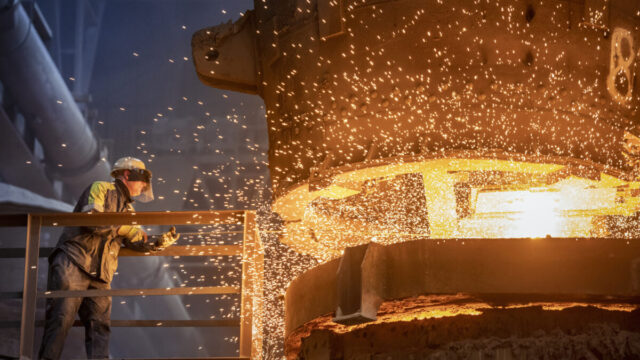- Chinese blast furnaces running at highest capacity utilisation since March 2021
- But high steel output could prompt production cuts in second half
- Leo Lithium up 7.5% as it pumps out first DSO in Mali
China’s blast furnace steel mills are running at their highest capacity levels since March 2021 despite bearish sentiment around the country’s economy which has hit demand for metals.
According to industry monitor MySteel capacity utilisation hit 91.98% in the Middle Kingdom, home to almost 60% of the world’s steel output.
That’s a lift of 0.38 percentage points, an belies the fact most steel mills were losing money quicker than your blind drunk friend who should have been cut off hours ago from the roulette table.
It comes after steel prices rebounded on bullish commentary from China’s Premier Li Qiang about its hopes of hitting a 5% GDP target in 2023.
Singapore 62% Fe futures lifted slightly to US$111.35/t this arvo.
Some analysts are doubtful the exuberance can last.
For one thing, strong steel production numbers like these are a double-edged sword. They raise the prospect of some well-timed “environmental restrictions” from the Chinese top brass and local governments.
The nation continues to want to limit steel below last year’s number, targeting a third year on year decline after hitting ‘peak steel’ in 2020.
Over the past two years these centrally enforced production cuts have been the main factor, along with Covid-19 lockdowns, in price drops.
Capital Economics commodity economists led by Caroline Bain say iron ore prices are likely to trend down in the second half of 2023.
“We suspect that annual steel output in China peaked in 2020 and forecast annual declines in output from here on,” they said.
“Moreover, the authorities are promoting a switch to electric arc furnaces and the greater use of steel scrap as an input rather than highly-polluting iron ore.
“There have been no major disruptions to iron ore production this year at the major suppliers in Brazil and Australia.
“However, China’s production has slipped and stocks at China’s ports have been drawn down recently, although they remain historically high.
“All told, we expect lower Chinese steel production in the second half of 2023 and into 2024 to weigh on the price of iron ore. We forecast that it will fall from $113 per tonne at present to $105 by end-2024.”
Monstars end week on a high
The ASX materials sector was on track for a 0.4% gain as of 3.50pm AEST, with lithium miners among the standout performers.
That was despite a slide in lithium prices in China according to Fastmarkets, with lithium hydroxide falling 20,000RMB to 290,000RMB (US$39,9995.60/t) and carbonate off 18,500RMB to 299,000RMB (US$41,236.80/t).
Leo Lithium (ASX:LLL) was among the big individual winners, up 7.5%, after announcing the start of direct shipping ore production at its Goulamina mine in Mali, a JV with China’s largest lithium company Ganfeng.
The DSO starter pit is based off a reosuce of 1.65Mt of fresh ore with an average grade of 1.68% Li2O and 0.73% iron oxide.
A haulage contractor will be chosen soon, with the DSO process to give insight into the logistics solution for Africa’s first major spodumene mine.
Leo expects to produce 185,000t on an annualised basis of DSO exports before turning on its spodumene concentrator in mid-2024.
“The early start-up of the open-pit mining operations at Goulamina via DSO is a positive milestone that positions the Company to crystalise long-term benefits,” LLL MD Simon Hay said.
“The revenue potential during a solid pricing environment will bolster our balance sheet flexibility, as we continue to progress the Goulamina Project towards spodumene concentrate production over two stages.
“DSO also presents an opportunity for us to optimise our logistics solution as we scale up Goulamina, further de-risking the Project’s development.”
Monstars share price today:
You might be interested in












